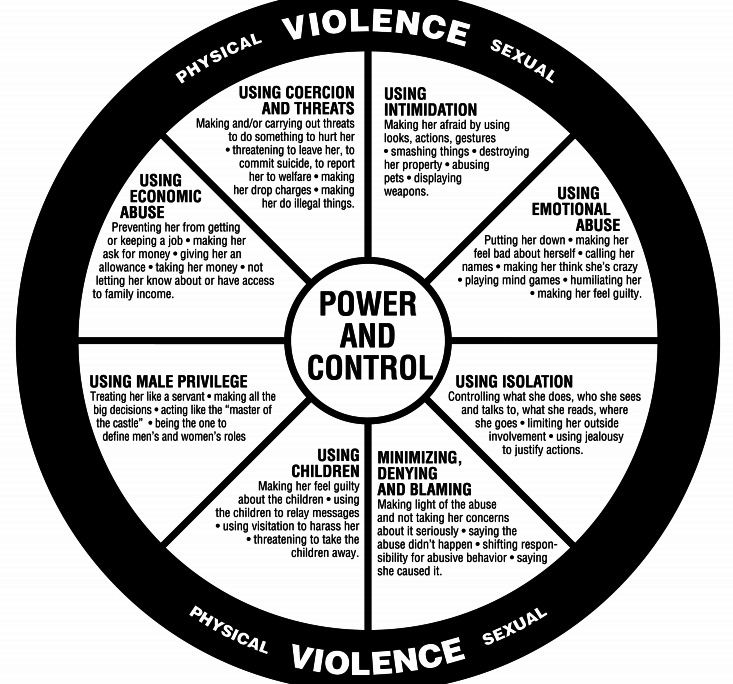Our best work is done in times when we feel a sense of purpose. This incorporates our will, our passions, and our best thoughts. It provides us with a sense of meaning for our lives.
 Some may remember the older Disney cartoon that showed a businessman unhappily going to his mundane job with bags under his tired eyes. Just going through routine motions every day has drained him.
Some may remember the older Disney cartoon that showed a businessman unhappily going to his mundane job with bags under his tired eyes. Just going through routine motions every day has drained him.
Life is more enjoyable when it includes meaningful activity. This can be during work or outside of work and the purpose is to engage with the people around us. Many people are not satisfied with their current jobs or life path, and personal coaches can help them reinvent themselves so they have some sort of meaning and a better sense of purpose.
What is it that you want?
In other words, ask yourself what your objectives are. Often, we take opportunities to participate in a type of project inside or outside of work without asking ourselves if that is truly what we want. This could be because we are going to get paid well, or we want prestige, or because someone we view as “important” is involved.
When we fail to ask ourselves what we really want, we start relying on impulses and aimless choices. Consequentially, our sense of purpose is diminished. As the business saying goes, “Aim at nothing and you’ll hit every time.” We must find our magic wands and put our desires down on paper, including things that may seem impossible or silly.
By asking yourself what you want, you can pinpoint your desires and then work to create plans that will help you reach your goals in life. This can be viewed as a form of being kind to yourself. A personal coach has the ability to help you figure out your desires and comprehend the complexities they entail.
Goals should be divided into fantasies, wants, and needs so that we can determine what is important and which things have the likelihood of success. For example, saying “I need to have a car so that I can get to work and then get home” is a need.
“I need an expensive Mercedes-Benz so that I can get to work and then get home” is a want (and possibly also a fantasy!). Obviously, we need some form of transportation, but expensive transportation exists as a luxury, and you may only need a nice car when you are taking a very rich client to lunch.
An example of a fantasy is, “I need somebody to provide me with a car,” which basically implies you want a car but do not want to put in any work to pay for it. Fantasies often share this dynamic.
Other examples include, “I have strong aspirations to become a famous singer, but I am not willing to leave my tiny hometown” and “I would like to speak another language but I would rather not have to learn it.”
The first implies that I want to become a celebrity even though it’s nearly impossible to do so in my small rural hometown, and the second one implies I want something but have no desire to actually learn it.
 Aiming for everything will probably produce the same results as aiming for nothing. A huge step in the difficult process is really narrowing down your focus. You must work on the things that are most important because we all have a limited amount of willpower, time, money, and energy
Aiming for everything will probably produce the same results as aiming for nothing. A huge step in the difficult process is really narrowing down your focus. You must work on the things that are most important because we all have a limited amount of willpower, time, money, and energy
For this, personal coaches can help with the filtering process. To an extent, we are postponing some of our dreams and a logical second opinion might help the decision-making process.
What is the process?
Once we form an understanding of what we want, we create a plan that includes action items or tasks. For example, the process of getting a car would be, “Get employed, earn enough money for the car, and then buy the car.” It isn’t difficult and you should be flexible.
If you hit a roadblock in your process, look and see if you can find a workaround to it. If not, it’s probably time to reevaluate that goal. As an example, “Get employed” can only work when someone has a reliable means of transportation, so a way to work around that may be, “Get employed, figure out public transportation, earn enough money for a car, etc.”
If public transportation is sufficient in your area, you may decide to wait to buy the car to save the money you would need for the gas, insurance, and maintenance that would come with it. Break down the path you need to take to reach your goal so that it will become more clear to you.
“Receive a Master’s of Business Administration and get employed as a middle-level manager” is an extremely broad goal. Instead, perhaps consider, “Find a college, get student loans, apply, complete courses, receive a degree, apply for mentorship programs at well-known companies, take whatever job I’m offered, work towards promotions.”
Of course, these steps could change over time, but it is best to have a reasonable, logical path that you can get started on. This process of evaluation can be made even better if you have a personal coach who can guide you and act as an unbiased sounding board.
Break Down the Plan
After you have narrowed down your path to one main focus, it is time to connect with a personal coach who will help you add details to the process. The purpose of the main focus is to ensure that you do not have competing objectives with steps that are mutually exclusive (e.g., “enroll in business school” vs. “receive an MFA in animation”).
Certain goals have the ability to run concurrently, however, this only works when the steps are also able to run concurrently. If your goal was to “learn to play the guitar” and your steps might be “purchase a guitar, find a great teacher, schedule sessions with the teacher.”
Perhaps a better breakdown might be “Do research to find the best inexpensive guitar, purchase one, make room for it, research guitar teachers, choose one and call to schedule sessions, dedicate some time to practice every day, and assess progress after three months.”
You have the option to break it down however you would like, but try not to spend too much time planning because it may lead to inaction. Often, it seems that execution is more difficult than planning, but you actually have to perform the tasks you created to reach your ultimate goal. If you tend to lack execution but are great at planning, see the sectioned titled “The Enemy Within” below.
 Action always requires expense. If we want to accomplish something, we must expend our emotions, time, effort, mental energy, and finances. Everything costs something. If we want to come up with a clear plan on how we can meet our goals, we need to consider the cost, which includes the cost to our loved ones.
Action always requires expense. If we want to accomplish something, we must expend our emotions, time, effort, mental energy, and finances. Everything costs something. If we want to come up with a clear plan on how we can meet our goals, we need to consider the cost, which includes the cost to our loved ones.
A person once wanted to become a screenwriter. He asked what his wife what she would say if he wanted to relocate to Hollywood, and her response was, “I would miss you.”
Everything we partake in costs something, whether it be energy, technology, money, and more. When you are making your plan, you must ask what the cost is financially as well as to yourself and loved ones.
You must also consider opportunity cost. This is the road that is not traveled. When you pick one path, another one cannot concurrently be chosen. For example, say you have $50 to spend, but you want two things that each cost $40. You have to pick one.
The thing you opted against can be classified as an opportunity cost. This is an important concept to remember when making decisions so that we don’t get blindsided suddenly at the last minute wondering how things would have turned out had we chosen the road that wasn’t traveled.
The Enemy Within
We often have the desire to go forward in a specific direction, but the moment we try to move forward, something stops us. A friend mentions a new job that we might be perfect for, and the friend’s positivity encourages us to find a slew of Help Wanted advertisements related to that job. When we are ready, we pick up the phone, but then we freeze.
Perhaps a teacher tells us that we possess a special gift. For a triumphant moment, we imagine being highly successful, performing in front of cheering crowds and winning awards. After that, though, the internal dialogue starts, the logistics of it and how they won’t work, our imperfections, all the reasons that we are not good enough.
Unfortunately, we all leave our dreams behind at times. Debilitating and demeaning thoughts hold us back and halt our creative processes. Many of us are afraid to fail or actually gain success, or family members or friends may be very critical towards us and hold us back as well. We need to leave this playing field in order to move past criticism and towards success.
It’s important that out of almost seven billion people, you happen to be the only you that exists. You should apply that to whatever your craft is and it will be made unique. We are concerned about people’s opinions and whether or not they will pay for our crafts and like them, but this is actually immaterial even though it might affect our ability to make a living.
Come up with personal affirmations that make you feel good, and actually use them. You can say things like “I deserve happiness,” “I am allowed to make choices,” “I am amazing and a reflection of God’s image.”
 Overall, we have the ability to make choices that can change our lives. We can leave the past in the past and live freely knowing the future is yet to be decided. We must live in the present so that we can move to the following step.
Overall, we have the ability to make choices that can change our lives. We can leave the past in the past and live freely knowing the future is yet to be decided. We must live in the present so that we can move to the following step.
Of course, it is vital to understand that some of the self-assessments we make are legitimate. People on talent shows such as American Idol often never had someone tell them they aren’t that great at singing. Instead, loved ones and friends always encouraged them and said that they totally had a talent for music.
Additional Help
We have an emotional grid that has been formed by good things as well as traumatic things that we have experienced, and what matters is what we decide to do with those things. Sometimes, we need to analyze the past so that we can move forward and have the ability to achieve and receive great things.
As we have all heard, being criticized by our parents during our childhoods can be debilitating and very hard to overcome. If we have had a series of embarrassing and humiliating setbacks, they may seem to confirm our fears regarding our inability to succeed.
It can be of great value to seek help from a counselor who is licensed in mental health. This person can help you move past dark places that you have been, events that have traumatized you, places where you may have failed, or places where you were neglected and lacked the proper nurture. This person can work with you to reframe the negative narrative and help you move past trauma and towards health and emotional growth.
When our mental states and emotions are integrated, we have a higher chance of being able to pursue our aspirations and goals. It’s hard and you will realize why is it referred to as “emotional work.” This concept differs from the concept of personal coaching because it is more about understanding the past and the ways that it is interfering with your ability to move forward.
The ultimate goal is to continue trying to make an improved version of yourself so that you can have a purpose and take action to move forward toward your goals, whether you are focusing on a specific path or improved health and emotional growth.
Final Thoughts
Scripture tells us that we lack things because we don’t ask for them. In other words, we lack God’s blessings because we don’t ask Him to give them to us. We can expand that by saying we lack what we want because we don’t ask ourselves what we actually want and we don’t ask ourselves “what’s this about?” when we begin to feel scared or inadequate.
Moving forward tends to be easier when we maintain a mature, adult-like position and don’t let our fears cripple us. We must remember that the past has already ended but the future isn’t written yet, so we must live in the present. We have the choice to do what we want with this information, and our choice determines what direction we will move in.
It is good to have aspirations and goals, and it is okay to ask for some assistance every now and then. We do not have to be alone in all of this, and personal coaches can give you perspectives to ponder that will lead to success.
Photos:
“Thinking,” courtesy of Klearchos Kapoutsis, Flickr.com, CC BY 2.0 License; “Arrows in Waiting”, Courtesy of Laura Crowe, Unsplash.com, CC0 License; “Money”, Courtesy of Sharon McCutcheon, Unsplash.com, CC0 License; “Long Distance,” courtesy of Chris Lawton, tookapic.com, CC0 License
 In this age of social media, more and more people, including popular entertainers, are posting their struggles with anxiety.
In this age of social media, more and more people, including popular entertainers, are posting their struggles with anxiety. In CBT, the professional counselor helps the sufferer reframe how they think and how they understand their behavior. In this way, negative thought patterns may hopefully be reduced to something more rational and realistic, preventing these unnecessary mental worries and physical responses to worry.
In CBT, the professional counselor helps the sufferer reframe how they think and how they understand their behavior. In this way, negative thought patterns may hopefully be reduced to something more rational and realistic, preventing these unnecessary mental worries and physical responses to worry. Spiritual self-care, which many today seem to ignore, is very essential as a weak spiritual connection to God makes one very susceptible to all kinds of problems, especially worries about the future. Regular prayer time, reading of Scripture, meaningful Church attendance, and fellowship with other caring believers will do wonders for the spiritual health so that negative, anxious thoughts will not easily bring one down.
Spiritual self-care, which many today seem to ignore, is very essential as a weak spiritual connection to God makes one very susceptible to all kinds of problems, especially worries about the future. Regular prayer time, reading of Scripture, meaningful Church attendance, and fellowship with other caring believers will do wonders for the spiritual health so that negative, anxious thoughts will not easily bring one down. Now while yoga is very helpful for those suffering from anxiety, as a Christian, one must remember to only incorporate the principles of relaxation and mindfulness and not any non-Christian spiritual practices or beliefs. Compromising one’s spiritual beliefs should never be an option.
Now while yoga is very helpful for those suffering from anxiety, as a Christian, one must remember to only incorporate the principles of relaxation and mindfulness and not any non-Christian spiritual practices or beliefs. Compromising one’s spiritual beliefs should never be an option.

 While many may seek happiness, it is joy that allows one to see the positives in life despite the changing circumstances. But true spiritual joy can only occur when a person is focused on God, trusting in Him as our loving Father, provider, and protector.
While many may seek happiness, it is joy that allows one to see the positives in life despite the changing circumstances. But true spiritual joy can only occur when a person is focused on God, trusting in Him as our loving Father, provider, and protector. Contrary to what the media usually presents, kindness does require grand gestures towards others. Small, daily acts of kindness, such as a smile or a helping hand, can already change a person’s outlook towards life. But when dealing with difficult people or tough situations, it helps to ask God for the strength to be kind. Kindness is a spiritual fruit that blesses both the giver and the receiver.
Contrary to what the media usually presents, kindness does require grand gestures towards others. Small, daily acts of kindness, such as a smile or a helping hand, can already change a person’s outlook towards life. But when dealing with difficult people or tough situations, it helps to ask God for the strength to be kind. Kindness is a spiritual fruit that blesses both the giver and the receiver. Self-control is the final fruit. With self-control, a man will be able to manage his response to antagonistic situations. However, to truly have self-control, the other spiritual fruits need to be present and the divine help of the Holy Spirit must be there as well. Without them, trying to manage one’s anger will be very, very difficult indeed.
Self-control is the final fruit. With self-control, a man will be able to manage his response to antagonistic situations. However, to truly have self-control, the other spiritual fruits need to be present and the divine help of the Holy Spirit must be there as well. Without them, trying to manage one’s anger will be very, very difficult indeed. It can cause tremendous stress when the workplace is filled with conflict, and it is common for adults with ADHD to frequently change jobs and career trajectories. It can be a struggle when faced with insufficient communication skills, a tendency towards distractibility, procrastination problems, and issues with project management.
It can cause tremendous stress when the workplace is filled with conflict, and it is common for adults with ADHD to frequently change jobs and career trajectories. It can be a struggle when faced with insufficient communication skills, a tendency towards distractibility, procrastination problems, and issues with project management.
 When it comes to boredom, it is important to find ways of maintaining concentration and interest in the project. It may be that a career change is necessary in order to find work that captivates interest.
When it comes to boredom, it is important to find ways of maintaining concentration and interest in the project. It may be that a career change is necessary in order to find work that captivates interest. While some adults with ADHD are open with their employers about their condition, many individuals are afraid that disclosing that they have ADHD will result in discrimination.
While some adults with ADHD are open with their employers about their condition, many individuals are afraid that disclosing that they have ADHD will result in discrimination. Some may remember the older Disney cartoon that showed a businessman unhappily going to his mundane job with bags under his tired eyes. Just going through routine motions every day has drained him.
Some may remember the older Disney cartoon that showed a businessman unhappily going to his mundane job with bags under his tired eyes. Just going through routine motions every day has drained him. Aiming for everything will probably produce the same results as aiming for nothing. A huge step in the difficult process is really narrowing down your focus. You must work on the things that are most important because we all have a limited amount of willpower, time, money, and energy
Aiming for everything will probably produce the same results as aiming for nothing. A huge step in the difficult process is really narrowing down your focus. You must work on the things that are most important because we all have a limited amount of willpower, time, money, and energy Action always requires expense. If we want to accomplish something, we must expend our emotions, time, effort, mental energy, and finances. Everything costs something. If we want to come up with a clear plan on how we can meet our goals, we need to consider the cost, which includes the cost to our loved ones.
Action always requires expense. If we want to accomplish something, we must expend our emotions, time, effort, mental energy, and finances. Everything costs something. If we want to come up with a clear plan on how we can meet our goals, we need to consider the cost, which includes the cost to our loved ones. Overall, we have the ability to make choices that can change our lives. We can leave the past in the past and live freely knowing the future is yet to be decided. We must live in the present so that we can move to the following step.
Overall, we have the ability to make choices that can change our lives. We can leave the past in the past and live freely knowing the future is yet to be decided. We must live in the present so that we can move to the following step. When most people think about anger they imagine verbal and physical outbursts. However, anger manifests in many different ways including a silent and invisible expression. The phrase “it makes my blood boil” accurately describes how anger can feel.
When most people think about anger they imagine verbal and physical outbursts. However, anger manifests in many different ways including a silent and invisible expression. The phrase “it makes my blood boil” accurately describes how anger can feel. Aggression is the typical symptom that comes to mind when anger is mentioned. Think of a toddler’s temper tantrum. They pinch, hit, scream, slap, punch, throw, slam and stomp. Those tantrums don’t always go away as the transition to adulthood happens.
Aggression is the typical symptom that comes to mind when anger is mentioned. Think of a toddler’s temper tantrum. They pinch, hit, scream, slap, punch, throw, slam and stomp. Those tantrums don’t always go away as the transition to adulthood happens. It’s not until someone snaps that others pay attention. It’s often hard to see what’s bubbling under the surface until it has already boiled over. Anger is like an iceberg.
It’s not until someone snaps that others pay attention. It’s often hard to see what’s bubbling under the surface until it has already boiled over. Anger is like an iceberg. Thoughts like, “I’m worthless” or “I’m not good enough,” can become repeated thoughts in the mind. If these thoughts are left bottled up, it can turn into a belief that life is not worth living anymore or everybody is better off without you around. Self-hatred can lead to suicide.
Thoughts like, “I’m worthless” or “I’m not good enough,” can become repeated thoughts in the mind. If these thoughts are left bottled up, it can turn into a belief that life is not worth living anymore or everybody is better off without you around. Self-hatred can lead to suicide. What about the person who hurt you? They apologize. You forgive them. You assume this means they won’t commit the offense again. But then the person hurts you more.
What about the person who hurt you? They apologize. You forgive them. You assume this means they won’t commit the offense again. But then the person hurts you more. As Christians, we know we are obligated to forgive. So, if there’s a time we’re struggling with the hurt someone has caused us, we often feel guilty and ashamed that we can’t “snap out of it” and immediately go on with life.
As Christians, we know we are obligated to forgive. So, if there’s a time we’re struggling with the hurt someone has caused us, we often feel guilty and ashamed that we can’t “snap out of it” and immediately go on with life. Then Peter came to Jesus and asked, “Lord, how many times shall I forgive my brother or sister who sins against me? Up to seven times?” Jesus answered, “I tell you, not seven times, but seventy-seven times.” – Matthew 18:21-22
Then Peter came to Jesus and asked, “Lord, how many times shall I forgive my brother or sister who sins against me? Up to seven times?” Jesus answered, “I tell you, not seven times, but seventy-seven times.” – Matthew 18:21-22 Some people will never be in our lives again because of the significant damage they’ve caused us. Sometimes we may have removed ourselves emotionally from something that happened a long time ago.
Some people will never be in our lives again because of the significant damage they’ve caused us. Sometimes we may have removed ourselves emotionally from something that happened a long time ago. I want this article to be a place to define domestic abuse. I’ll also list some of the most common signs for outsiders to be aware of, and for victims to be able to confirm that what they are experiencing is indeed abuse. I’ll also outline what steps a victim can take upon finding themselves in an abusive situation.
I want this article to be a place to define domestic abuse. I’ll also list some of the most common signs for outsiders to be aware of, and for victims to be able to confirm that what they are experiencing is indeed abuse. I’ll also outline what steps a victim can take upon finding themselves in an abusive situation.
 Domestic abuse does not always happen how you might think. It can start small and build up from there. Often, abusers choose kind-hearted, empathetic victims whose very strengths are used against them. The victims are then manipulated into a life of submission to a controlling, abusive partner.
Domestic abuse does not always happen how you might think. It can start small and build up from there. Often, abusers choose kind-hearted, empathetic victims whose very strengths are used against them. The victims are then manipulated into a life of submission to a controlling, abusive partner. This keeps the victim confused and off-balance. She might think that the latest abusive incident is the last one. She might think it’s her fault, which he would like to convince her of, especially if she responds emotionally or angrily to his treatment of her.
This keeps the victim confused and off-balance. She might think that the latest abusive incident is the last one. She might think it’s her fault, which he would like to convince her of, especially if she responds emotionally or angrily to his treatment of her. Assessing the safety and risks is the important factor. Once a woman begins to make efforts to change the relationship or to leave the situation, the risk of violence increases exponentially. Making a safety plan is paramount if you believe there is even the slightest risk of violence.
Assessing the safety and risks is the important factor. Once a woman begins to make efforts to change the relationship or to leave the situation, the risk of violence increases exponentially. Making a safety plan is paramount if you believe there is even the slightest risk of violence. People often approach productivity on either end of a spectrum. On one hand, you might be more spontaneous and neglect planning. On the other hand, you might be controlling and too focused on an outcome.
People often approach productivity on either end of a spectrum. On one hand, you might be more spontaneous and neglect planning. On the other hand, you might be controlling and too focused on an outcome. Planning is the easy part compared to carrying out the plan. The reason we make plans, or set objectives, is so that our efforts lead to the best possible outcome. This is why we recommend starting with one main objective in your professional development plan.
Planning is the easy part compared to carrying out the plan. The reason we make plans, or set objectives, is so that our efforts lead to the best possible outcome. This is why we recommend starting with one main objective in your professional development plan. Depending on your main objective, your alternatives might still be at a high level (pursuing a new degree, for example). If this is the case, you’ll need to break them down into smaller steps you can take.
Depending on your main objective, your alternatives might still be at a high level (pursuing a new degree, for example). If this is the case, you’ll need to break them down into smaller steps you can take.
 People experiencing job burnout describe it in different ways. Some feel like they are in a panic or even “lost” as they are no longer sure about what it is they are doing.
People experiencing job burnout describe it in different ways. Some feel like they are in a panic or even “lost” as they are no longer sure about what it is they are doing. 3. Understand that being burned out is not unusual as many people will experience something like this at some point in their life (to varying degrees). And know that God sees your need and is just waiting for you to ask for His help.
3. Understand that being burned out is not unusual as many people will experience something like this at some point in their life (to varying degrees). And know that God sees your need and is just waiting for you to ask for His help. Big achievers do things with intention. These intentions are manageable goals that are part of their overall plan which is usually seen through, either by themselves or with the right help. Without them, one’s dreams may be impossible to achieve.
Big achievers do things with intention. These intentions are manageable goals that are part of their overall plan which is usually seen through, either by themselves or with the right help. Without them, one’s dreams may be impossible to achieve. “Come to me, all you who are weary and burdened, and I will give you rest. Take my yoke upon you and learn from me, for I am gentle and humble in heart, and you will find rest for your souls. For my yoke is easy and my burden is light.” – Matthew 11:28-30, NIV
“Come to me, all you who are weary and burdened, and I will give you rest. Take my yoke upon you and learn from me, for I am gentle and humble in heart, and you will find rest for your souls. For my yoke is easy and my burden is light.” – Matthew 11:28-30, NIV Anxiety can prevent us from taking part in social activities. It can cause us to have problems at work or keep us from going to gatherings. When we are missing out, it is high time to take a close look at our anxiety and the social phobia it is causing in order to better understand it and to better enable us to get help.
Anxiety can prevent us from taking part in social activities. It can cause us to have problems at work or keep us from going to gatherings. When we are missing out, it is high time to take a close look at our anxiety and the social phobia it is causing in order to better understand it and to better enable us to get help. Try to get a grip on it through taking deep, controlled breaths. Breathe in through your nose and then out slowly through your mouth, counting to three. Once you have completed the deep breathing exercise, attempt to figure out what the trigger is.
Try to get a grip on it through taking deep, controlled breaths. Breathe in through your nose and then out slowly through your mouth, counting to three. Once you have completed the deep breathing exercise, attempt to figure out what the trigger is. Controlling our focus is the key to stopping the circus. It takes some practice but it can be done. When you think of positive things about yourself, you will find that your anxiousness subsides. A good bit of the worry we have is based on things that are not true. You may feel God is going to punish you for something or that you are going to get a disease. Think of fears you had in the past that never came to pass. That is very helpful in recognizing the unwarranted fears.
Controlling our focus is the key to stopping the circus. It takes some practice but it can be done. When you think of positive things about yourself, you will find that your anxiousness subsides. A good bit of the worry we have is based on things that are not true. You may feel God is going to punish you for something or that you are going to get a disease. Think of fears you had in the past that never came to pass. That is very helpful in recognizing the unwarranted fears. If all environmental factors have been ruled out, it could very well boil down to a psychodynamic contributor, like having an overly critical father or mother who continually made him feel belittled. While this issue is one that can take some time to really work through, there are short-term solutions that can temporarily help to boost his self-confidence.
If all environmental factors have been ruled out, it could very well boil down to a psychodynamic contributor, like having an overly critical father or mother who continually made him feel belittled. While this issue is one that can take some time to really work through, there are short-term solutions that can temporarily help to boost his self-confidence.